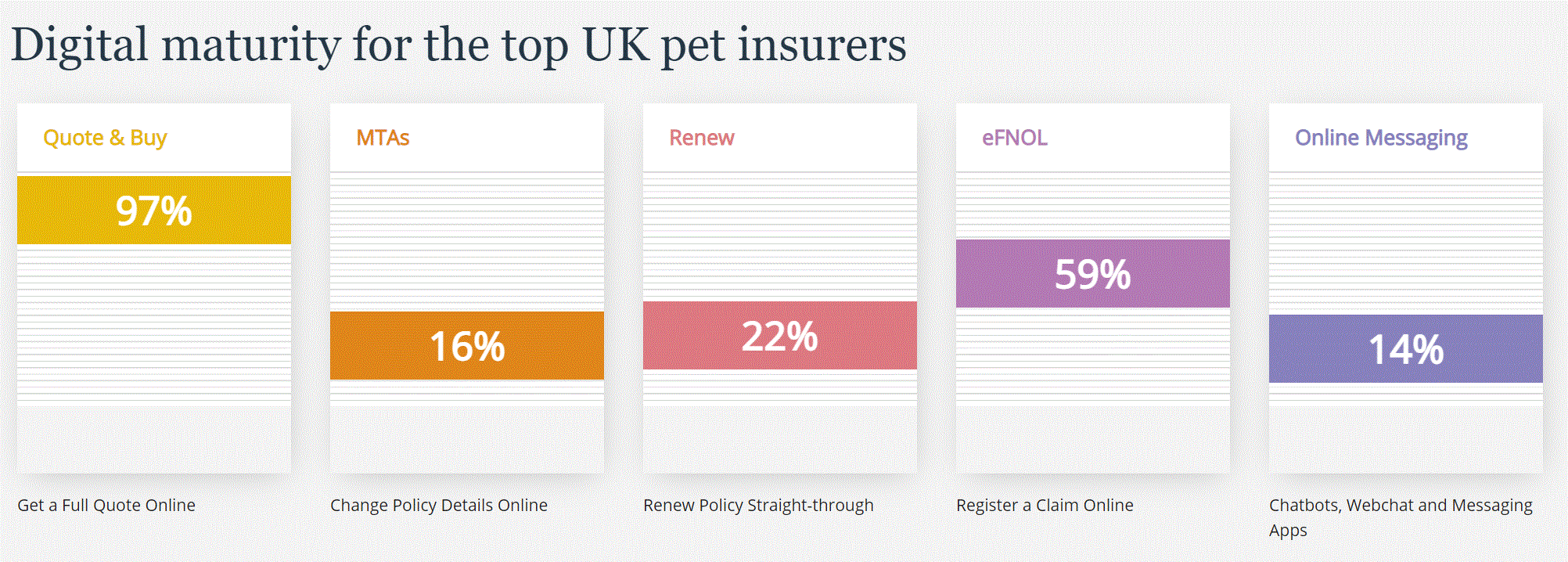It was only a couple of weeks back at Insurtech Insights Europe that Simplyhealth CEO Dr Sneh Khemka explained the purpose driven goals of his company- a key reason he joined to lead Simplyhealth into its natural future, but more importantly to look after its customers, better than ever before.
Khemka originally trained and practised as a general and ophthalmic surgeon before deciding to establish his own business where he could positively impact millions of lives rather than just thousands as a surgeon.
" At Simplyhealth, we know that prevention is better than cure. We want to help you stay healthy, now and in the future.
Our health plans make sure you have access to and can afford to stay healthy through dental treatments, visits to the optician, complementary therapies and much more."
Khemka also explained what he looked for in technology partners. Not least was a deep empathy with the purpose driven goals of Simplyhealth and a commitment to help it achieve those goals. Much more than just technology and digital transformation- in fact transformation of the business and delivery of new business models.
“We are dedicated to improving access to healthcare for all in the UK and we want to make it even easier for our customers to interact with us. Moving to a modern platform to act as the centre of our ecosystem, integrating easily with our other partners, was the logical choice,” said Dave Exall, Chief Digital and Technology Officer at Simplyhealth.
“Delivering a platform that will enhance the user experience for corporate customers, employees and consumers was at the heart of our selection process. The Ski platform offered both the depth of functionality for our business, whilst providing a configurable architecture with its hundreds of API end points. Most importantly we felt that the Genasys culture and innovative spirit embodied the values most important to us, enabling us to achieve our vision.”
Exall and Khemka know that transformation is not easy. It is a hard slog requiring a clear vision and strategy, communication and clarity across the organisation and very good project management.
I loved the analogy from David M Brear CEO and Co-Founder of 11:FS comparing transformation to the metamorphosis of a larvae into a butterfly.
“We delight in the beauty of the butterfly, but rarely admit the changes it has gone through to achieve that beauty.”
Read more here Everyone wants to be a beautiful butterfly
You certainly get the impression that Simplyhealth and Genasys will fly and not stay restricted to the ground by older technology.
Simplyhealth was not the only company at Insurtech Insights that set its sights on a transformative change with coretech platforms designed and able to deliver the insurer of the future as well as the innovative insurer of today.
The carrier esure was recently acquired by Bain Capital and esure's CEO David McMillan has brought the whole company together to drive a major transformational change. No incrementalism here but a goal to create the "insurer of the future" leapfrogging other carriers in the process. esure sold off its famous price comparison aggregator business GoCompare to focus on an ecosystem driven range of products and services that deliver the rapidly changing insurance requirements of customers of all ages and backgrounds.
esure's Chief Strategy and Transformation Officer Roy Jubraj explained the massive amount of planning and hard work required to become the “Insurer of the Future”. It's not the simple stairway to heaven seen on many a vendor's website.
Transformation involves much more than just technology and replacing the current legacy core of the business. esure plans to be the Netflix of insurance and create products and services that deliver highly personalised products, services, and pricing to customers with a digital and customer experience that beats customers’ demanding expectations.
Many insurers are, like esure, chasing the insurance ecosystem vision but technology has thus far let them down as the majority of solutions have been built around the design of platforms designed and built in the days when you could take years to build hard-coded and stable core platforms and just upgrade them every four to five years. They were insurance company focussed rather than customer focussed. They were suited to incremental improvement rather than rapid transformation.
But today competitors like wefox, ManyPets, Simply Health are innovating at speeds unhindered by these complex and slow to change core systems and key platforms. wefox CEO Julian Teicke gave another keynote speech at Insurtech Insights is now the #1 full-stack insurtech in the world with a loss ratio to be proud of and growth in premiums and profitability leaving loss-making Lemonade, Hippo, Root etc in the shade.
I often write about the digital maturity of incumbent carriers using the Altus DigitalBar ratings of digital maturity as a yardstick. ManyPets ( known as BoughtbyMany util the recent rebranding) achieves a score of 84%

Compare this with all pet insurers

ManyPets not only delivers a better CX and DX for customers, staff and partners but also an ecosystem of products and services that customers love. Its technology platform enables ManyPets to innovate at speed and deliver new products and services.
This is the reason Simplyhealth and esure have chosen modern micro-services architected, API rich, low-code/no-code, cloud-native and scalable coretech rather than the inflexible, complex and costly gorillas in the market that require major upgrades every few years.
It takes courage to choose that route when a vendor like Guidewire has over 450 customers globally on its insurance platform but fortune often favours the brave . And the new alternatives are proven, are scalable and designed for the ecosystem driven dynamic future where competition is coming from all sides.
Take Auto OEMs embedding insurance in their offers with Tesla in the lead with ts own insurance company. Mercedes recently announcing it will accept liability for road accidents for drivers of its vehicles with Level 3 advanced driving assistance systems.
"Automotive autonomy, risk, liability and insurance and the general use of telematics and vehicle comms have been big topics for some time. I've explored them in many different forms over the years. The key here will be to get to a balanced place. If automotive manufacturers become ecosystem drivers, insurers may well need to become the modular producers - just like Amazon & PayPal. There's going to be a lot of risk outside of the vehicles control, so this feels like a partnership opportunity, this will mean that insurers will need to display true agility and flexibility as well as the ability think way past the concept of a "policy".
At the recent Insurtech Insights Europe event people felt strongly that a tipping point is coming in insurance. A realization that there’s so much value to unlock, and we now have the technology and tools that can lead us to this ecosystem future. One where the role of insurance is much deeper in the lives of customers and businesses. Everything, from helping vehicles achieve full up time and utilization, removing risks from poor vehicle maintenance all the way threw to simply digitizing and automating vastly complex processes. And the industry displaying the largest appetite to transform this is the automotive sector itself. The realization that the telematics of the vehicles, and the ever increasing proximity of the data to near real-time presents a completely different opportunity. One that could go way beyond the realms of behavior based incentives (or premium discounts) and extend much further becoming embedded, seamless, usage based and intelligent, helping drivers get safer and more efficient and even more environmentally friendly - all wrapped into one service."
Rory Yates EIS
And it’s notable that Tesla has also launched its car insurance offering, aiming to improve the customer experience through automated underwriting, rating, and claims, including direct data feeds with customer permission, that eliminate frictional costs and inefficiencies inherent in traditional insurance process.
Look at esure again that has turned its back on the traditional incumbent core platform vendors.
Forming the backbone of esure’s technology platform are
- cloud-based Amazon Web Services (AWS)
- omnichannel contact centre Amazon Connect
- US digital insurance Coretech platform EIS.
The new generation Coretech platforms have baked in all the primary principles of modern engineered software powered ecosystems like Amazon Connect. And when the ambition of insurance customers meets the power of Coretech, transformation happens. Better for customers, better for employees and better for their business. Enabling them to move at the speed of an insurtech."
EIS and Genasys are examples of this new generation of scalable CoreTech platforms and as the competition to incumbent carriers and brokers heats up even more the demand for such technology will increase.
Successful transformations point the way for other technology vendors and insurers.
Leading insurance software solutions provider, Genasys, today announced that it is teaming up with Simplyhealth to help the UK’s leading health solutions company on its digital transformation journey. The partnership will see Simplyhealth move to a single policy platform, migrating over a million health plans from its current insurance system to Genasys’ flagship platform SKi® in a multi-year project.
https://insurance-edge.net/2022/04/06/genasys-partners-with-simplyhealth/









